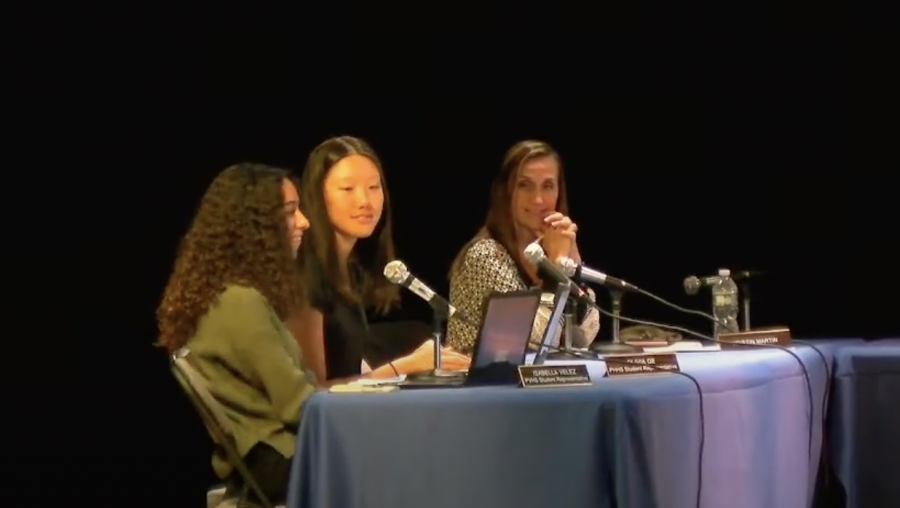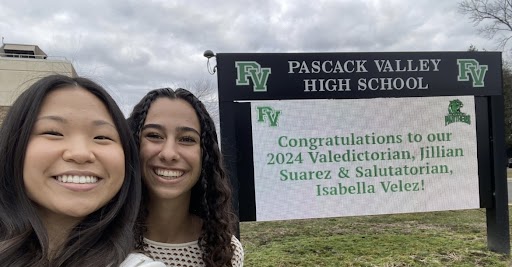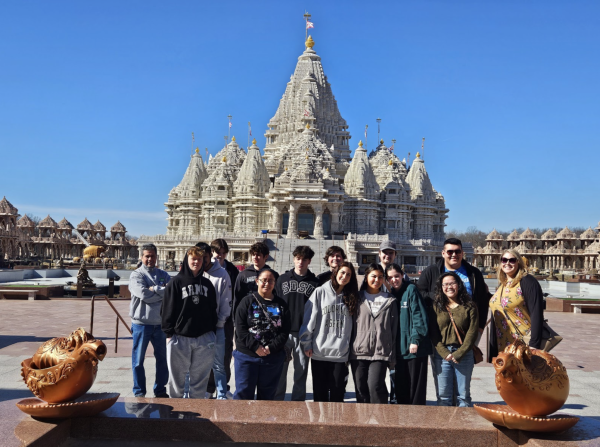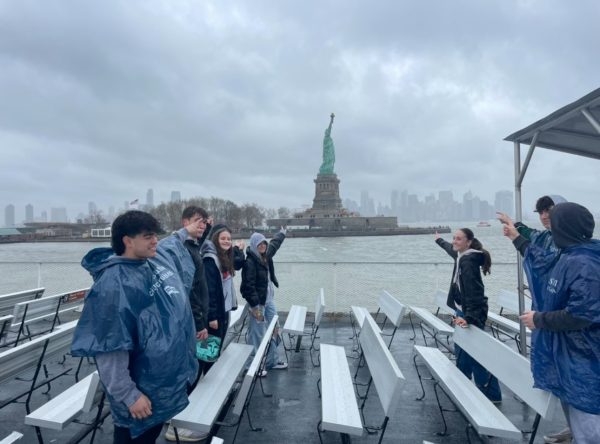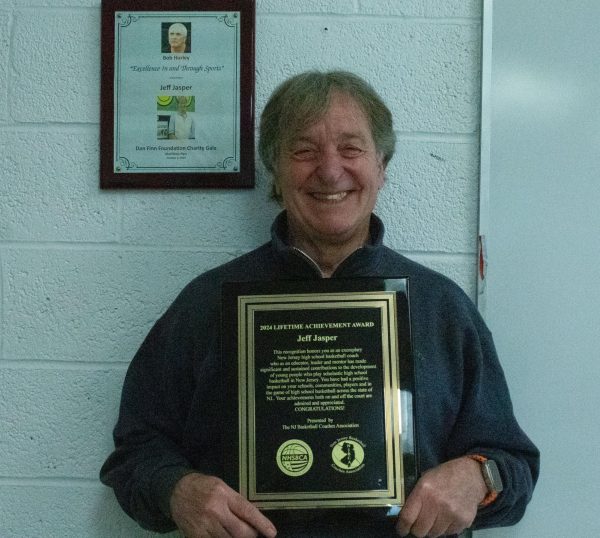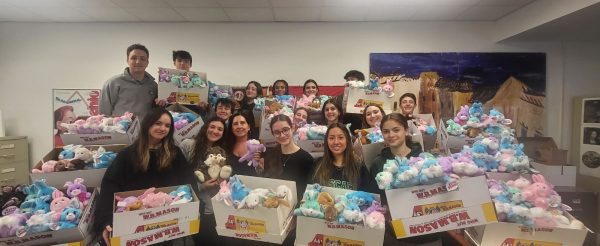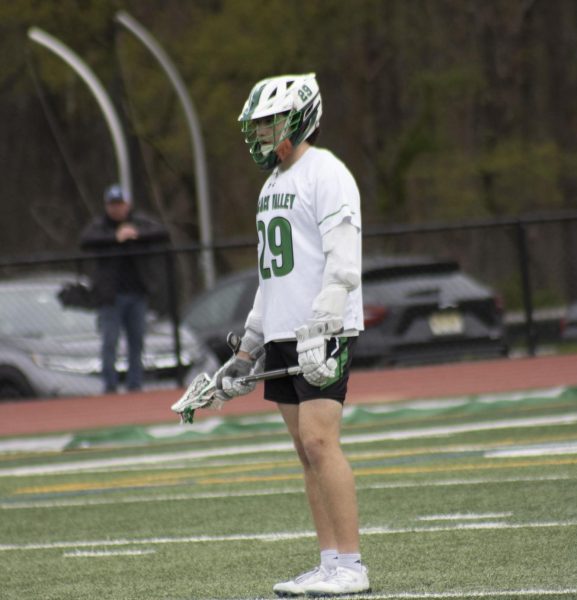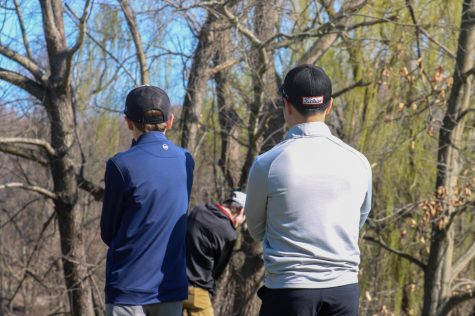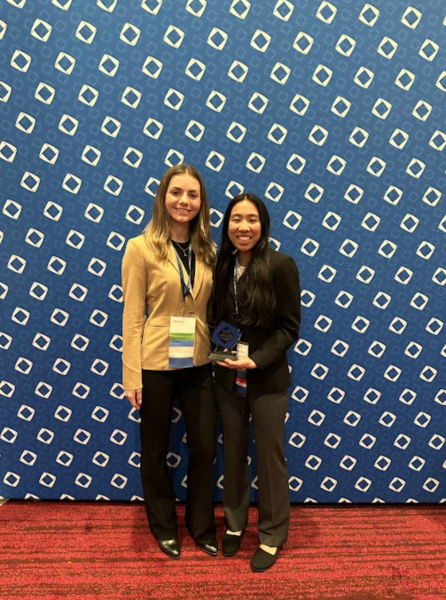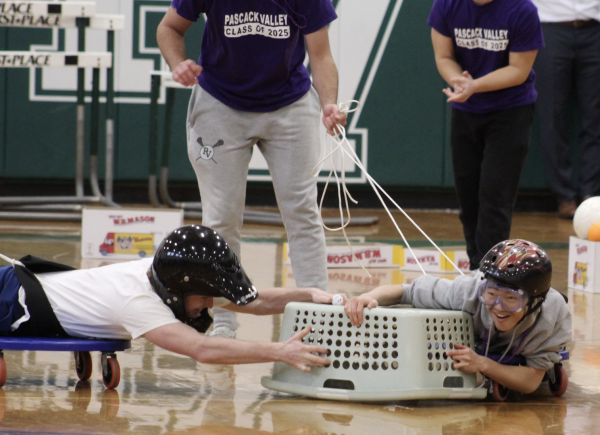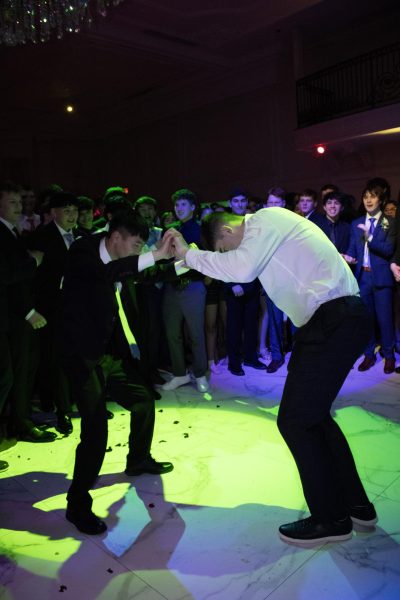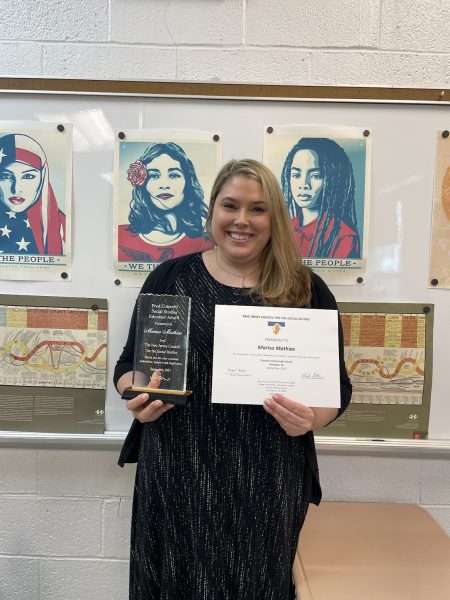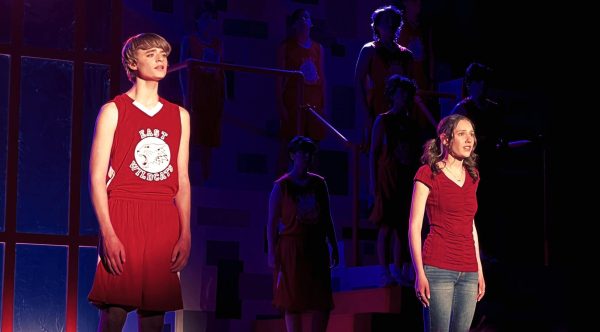How the student representatives came to be
The Student Representative position on the board has been around since the 1997-98 school year. Staff Editor Emily Moy explores the origins of the student representative position and how it has changed over time.
On one Monday night each month, Pascack Valley junior Isabella Velez attends the Pascack Valley Regional District Board of Education meetings in the PV auditorium.
Velez serves as one of the student representatives on the board this year, along with Pascack Hills junior Olivia Ge. The representatives provide the board with their input on certain issues, and they give reports about what is happening in their schools at each meeting they attend.
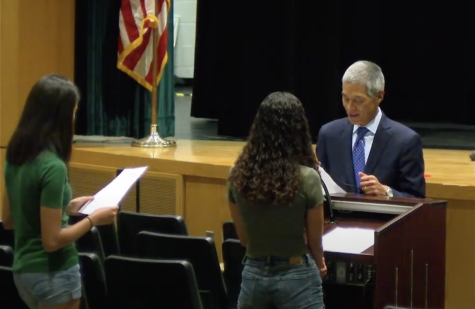
“I was a little bit nervous at first [about being the representative],” Velez said. “But once I got to the first meeting, all the board members were very welcoming and they made me and [Ge] feel comfortable.”
Although the board meets every other Monday night—generally two meetings a month—the student representatives only attend one of the two. Throughout the meeting, the board votes on and approves various topics, such as budgets or new staff members. The student representatives are not allowed to vote on matters that the board discusses, although Larry Meyerson, who served on the board from 2000 to 2007 and stated that he served as the board president “[for] at least four or five of [those years],” often thought about potentially giving voting rights to the student representatives.
“[Giving the representatives voting rights on certain issues is] something that should be debated and discussed,” Meyerson said. “Then again, they’re very often not old enough to vote. So in general, it’s complicated and controversial, but throwing it out there might be an interesting question.”
At the meetings, the representatives give reports on the happenings of their respective schools and provide feedback on various topics that arise during the meetings. To put together Velez’s reports, PV English teacher and Executive Council Advisor Shawn Buchanan sends an email to the PV faculty on the Monday prior to the meeting and asks them to send him information about happenings in the school or in their classes.
“Normally, that Friday or over that weekend I compile and organize [all of the information] and then I touch base with the reps,” Buchanan said. “[I also] make sure everyone’s good with the report, and then [we] touch base if they have any last minute questions and then they give that report that Monday night.”
According to current board president Joseph Blundo, “[the board looks] forward to those [reports]…[and] getting real-time feedback about things.”
“Going back several years ago, we had some controversial issues—not just the mascot, but the transgender policy and things of that nature,” Blundo said. “It’s always good to get a student’s perspective and not just make decisions without making sure we’re hearing from people that walked the halls.”
The student representative is a two-year appointed position on the PV Executive Council, with the junior class liaison being the student representative on the BOE and the sophomore class liaison acting as the deputy representative. The deputy representative steps into the role if the student representative cannot make it to a meeting.
“The student rep to the board of ed [position] is a two-year position,” Buchanan said. “But the second year is when they’re actually the rep on the board of ed. The first year they’re a deputy rep, where they learn the ropes and shadow the [current] board rep.”
Sophomore Maddie Gibbs is currently the deputy representative on the board.
“I think the dual-year position is a really smart option because it gives you familiarity with what you’re going to do [as the student representative],” Gibbs said. “[Velez is] a really great mentor…I did sit in for one meeting and she gave me everything she knew. She told me what to do and it made it a lot easier.”
Last year, Velez shadowed PV senior and Executive Council President Evan Scalia, who was the student representative at the time.
“Every meeting, [I learned] something new,” Scalia said. “I was surprised at how much [the board did] for students [like approving] all the trips.”
During the meetings, the board might go into executive sessions, which are closed to the public due to the sensitive nature of the topics discussed, such as Harassment, Intimidation, and Bullying [HIB] infractions or legal matters. Student representatives are not allowed to sit in on the executive sessions. If there is an executive session in the middle of a BOE meeting, the representatives are allowed to go home.
“I certainly understand why [the student representatives are] not part of exec sessions because [there are] highly sensitive discussions,” Meyerson said. “At the end of the day, the students are minors, and you have to always factor into consideration that some of the things we discuss are not appropriate for the students to listen to.”
It might be surprising to some that the student representative position has not been around since the school board was first created—the first student representatives sat on the board at the start of the 1997-1998 school year.
Origins
After being hit with budget issues during the 1996-1997 school year, the Pascack Valley District Board of Education realized the need for student voices on the board.
“In 1996, [the first time in all the years I was at Pascack Valley], the budget failed,” former PV history teacher and Executive Council Advisor Karen Kosch said. “So all of a sudden, there was this combination of factors saying we need to have students involved more, and the board [was] saying, ‘[we] want to hear what the students have to say.’”
Enter the student representatives.
1999 PV alum Ryan Shell, along with 1999 Pascack Hills alum Matt Kraycinovich, served as the first student representatives during the 1997-1998 school year. Prior to becoming the representatives, both Shell and Kraycinovich attended board meetings “for different issues,” Shell said.
According to Shell, he and Kraycinovich went to the superintendent at the time, Richard Willett, who helped them with creating and implementing the position.
“It was pretty exciting [being the first representative],” Shell said. “[There aren’t] many times you could be the first doing something like that.”
At first, the student body did not know much about the position in its earliest days; “[the position] was so new, and it was so unprecedented,” according to Shell.
Over time, though, as people started understanding the role of the student representatives, Kosch remembered how having a fellow student sitting on the board encouraged students to make their voices heard at the meetings.
“As things unfolded, and [students] saw Ryan coming back [from meetings] and they saw surveys coming out, kids themselves would feel more comfortable going to the board,” Kosch said.
Both the board members and the student body benefited from the information the student representatives had.
“[The board] appreciated the information that we would provide to them,” Shell said. “The student body and the Student Council appreciated what we brought back to them. But it was a learning process for everybody because it was the first time that had happened.”
Shell felt that the board members made the student representatives feel like they were part of the team.
“[The board members] definitely went out of their way to make us feel [as if we were important],” Shell said. “All the board members got packets of information in advance and they would give us those packets of information in advance as well.”
Despite the fact that the position was so new, Annette Bolyai, who served on the board from 1991-2002, both before and after the student representative position was created, “thought [that the transition to having student representatives on the board] was pretty seamless.”
Before the position was created, Bolyai and some of the other board members had heard of other districts having student representatives. They then brought it up to Willett.
“[Willett] said, ‘that’s not something that should be imposed on the students from board members. It should come as a proposal from the students, and [it should be] something they want to do rather than something that they have to do,’” Bolyai said. “It wasn’t long before a proposal did come from them. They wanted to have representation and they made a good case for it. And it was approved very easily.”
The community also appreciated the role of the representatives—Shell stated that “there was no opposition [that he knew of]. Everybody was very supportive.”
Evolution and takeaways
The student representatives are not required to be at every single meeting. According to Blundo, “we had basketball players that would have to miss meetings because [of] games or…mandatory practices and stuff so it’s not that [the reps are] absolutely required to [be at every meeting].”
“The position did change over time, but I think it also was a function of—and I don’t mean this as a criticism at any one particular person—some of it was a function of the particular representative,” Jeffrey Steinfeld, who served on the board from 2003 to 2016 and, according to Steinfeld, served as the board president “for about 11 years…until I retired from the board,” said. “There were times that we had representatives who were much more active, who spoke at meetings and were active on the board, and some were less active.”
Steinfeld hopes that many of the students still serve as active community members long after their time as representatives.
“I certainly was hopeful that they would continue to be active and involved in their college communities and their communities once they got out of school,” Steinfeld said. “All of our reps were very smart and very bright. They were very motivated. They were very interested and concerned…I think in most cases, young people who are motivated and are involved become adults that remain actively involved.”
During his time on the board, Shell learned a lot about the school board system and how although PV and PH are separate schools, they are governed by the same board of education. He found it interesting to watch “how the process works with regionalization and [how] the different towns and schools [report] to the Board of Ed.”
“Things are not always as simple as they seem,” Shell said. “[If] you want to make changes in a school…it’s not always as simple as just bringing something up and then the school can execute it. Sometimes there are things that need to be brought to a higher level.”
A takeaway from serving as the representative that Shell still holds on to today is to listen to younger peoples’ ideas.
“As I’ve gotten older, because of that experience [as a student representative], as an adult I have learned that it is valuable to have the input of younger people,” Shell said. “That’s something that [I’ve] definitely always carried with me.”
A common idea that Board Members Blundo, Steinfeld, Meyerson, and Bolyai all shared was their appreciation for the student representatives’ contributions.
“Having the perspective of the people we were making decisions for—the students—was very important,” Bolyai said. “They were the ones impacted by things that were decided by the board. It was great to have them there. A couple of the board members didn’t have kids in the school…so it was important for them to hear directly from the kids, and they were all great kids.”
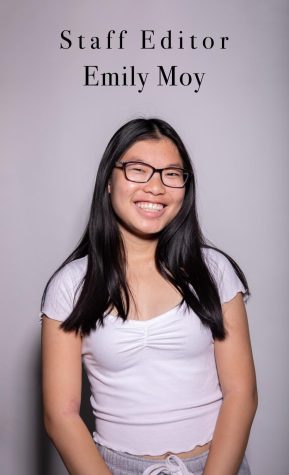
Emily is a senior who has been part of The Valley Echo since her freshman year. This is her second year as an editor, and she loves being able to share...

